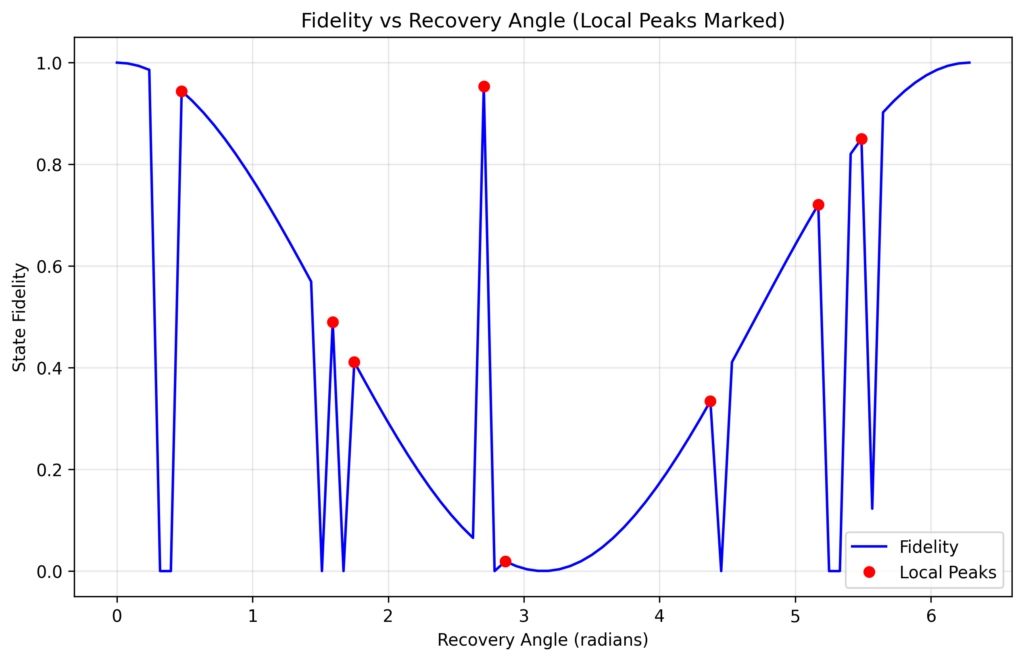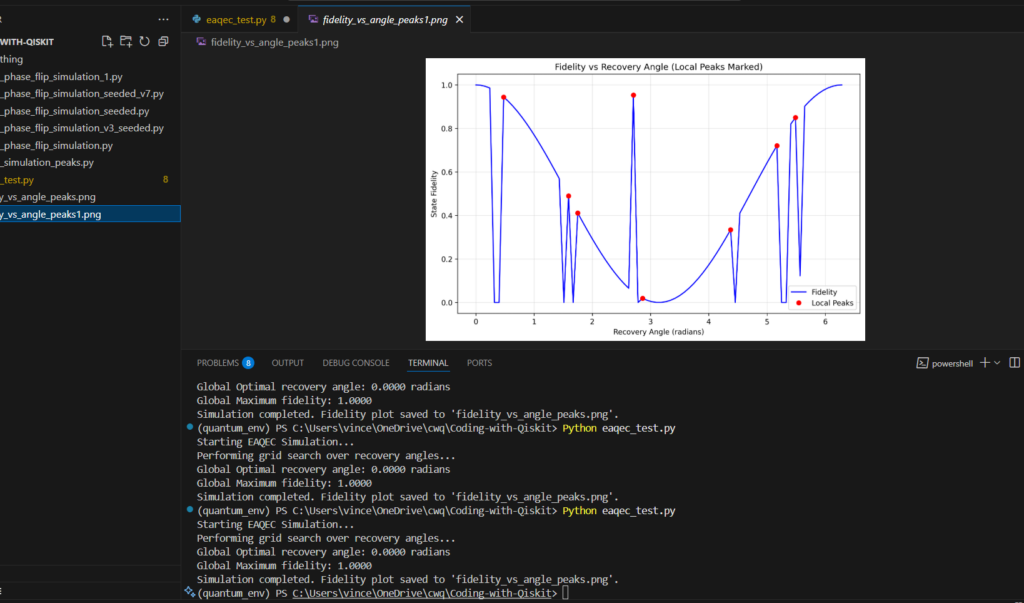5/3/2025
Project Recap
I’m exploring a way to make quantum computers more reliable by tuning a single setting – the rotation angle of the recovery gate – in an entanglement‑assisted quantum error correction (EAQEC) code. By simulating noisy quantum circuits in IBM’s Qiskit and running a “grid search” over different angles, im trying to find the setting that best counters noise and maximizes the accuracy (fidelity) of the state. As noise varies between different applications of quantum computing, I am not out to prove an exact code or situation in which this test would best for optimization. Rather, I’m simply trying to show how there are so many changes we can make to software optimization of quantum computing, and that any diligent learner – potentially even a high school student – can learn about the basics and help contribute to research.
Where I Am Now
Code Iterations: I went through three major versions of my simulation code. Each time, I refined the circuit structure, noise model, and data‑collection methods.
Final Prototype: The current script simulates a 4‑qubit EAQEC code under depolarizing (and phase‑flip) noise, loops over 80+ rotation angles, records the fidelity each time, and plots fidelity vs. angle.

Challenges & Struggles
Bad optimization for data analysis: In some testing curves were frustratingly flat under depolarizing noise (no rotation appeared to help) or too noisy to reveal clear peaks under phase‑flip noise.
Complexity: Trying to learn Quantum computing and how each concept actually works was extremely confusing and I ended up simply testing without completely understanding the process.
AI Ambiguity: I leaned heavily on AI assistance to write and debug code. AI often produced plausible but incorrect results, requiring careful review and multiple prompt‑engineering iterations. I had to look over each result and ensure that the results were replicable

Key Lessons Learned
- Small tweaks might matter sometimes Even tuning one gate angle can sometimes yield big performance changes—but sometimes the code is already so effective (for the |+⟩ test state) that there’s little room for improvement.
- Simulation vs. Real hardware: Unseeded noise sims remind me that actual quantum noise is random; true hardware could behave differently.
- AI Is a Tool, Not a Panacea: AI accelerated coding but also introduced errors. I learned to double‑check every result and understand the logic behind each code snippet.
Next Steps
- Understand the Coding process completely
- Understand the simulation results and run multiple simulations on VScode, hopefully so I can present it to people of all sorts of knowledge levels (even myself as I am a complete beginner)
Leave a Reply